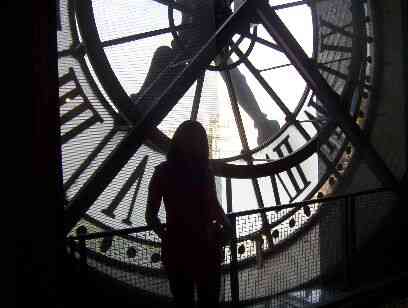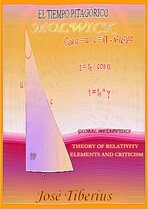1. ALBERT EINSTEIN THEORY OF RELATIVITY
Albert Einstein developed the Theory of Relativity in two stages or different physical theories. The first one, Special Relativity (SR) or restricted relativity, establishes relativity of time. However, the second is necessary: General Relativity (GR), written to solve numerous holes in the first theory, both conceptual and experimental.
One could say that Theory of Relativity is comparable to a building, where the first few floors correspond to SR and the higher ones to GR.
Although technically General Theory of Relativity (1916) includes the Theory of Special Relativity (1905), in many cases this terminology indicates the two main parts of relativistic physics.
Despite the lack of foundations in the building, I aspired, as many people have, to understand these famous physics theories, only because of the love for science. I believe I have managed it. Besides, I did confirm the first impression, and I have come to the conclusion that both SR and GR are mistaken as far as the poor time is concerned, and by extension, quite a few more things.
At the same time, I should emphasize that, when taking into account the definition of a second of 1967, Einstein’s theories are formally correct. The interval of time, which configures the unit of time, modifies with changes in gravity, or in the speed of the atom of Cesium, to which it refers.
If it is difficult to understand these theories, it is even more so to criticize them or to understand the criticism. A satire of the unknown will always be weak. Therefore, I have tried to present its content briefly from an orthodox point of view before explaining the counterarguments.
What is much worse is to criticize Einstein’s two theories for being contradictory, given that, what one does not affirm the other one does, and vice versa. They are like twin theories not getting along.

Some of the main characteristics of this book are the following:
-
Goal
Undoubtedly, the theory of relativity overall is one of the most complex theories in the history of science. Together with Darwin’s theory is also one of the most controversial, despite the number of experiments that have supposedly confirmed it.
Besides the AMEISIN relativistic writing style of Albert Einstein, he uses many thought experiments. Furthermore, it means a change in the model of the physical reality, which implies various areas or sub-models, some of which are correct, but others are not. In a more general sense, the relativitas causa would be a collection of so-called misleading coincidences.
The goal of this book is to reveal that explanations about the Theory of Relativity are inadequate, if not wrong; contributing to the widening of a pre-existing rift between Modern Physics and society knowledge. There is an attempt to develop a destructive criticism while, in some way, still acknowledging its positive points.
The idea is to point out weakest aspects of relativity and to present interpretations of events of the physical reality more consistent with common sense, to propose Global Physics as a new theory of everything, with specific experiments to confirm it. These include the experiments Gigachron and Distant Michelson-Morley, equivalent to LISA experiment of ESA –before of NASA.
It is funny that, on the one hand, the Theory of Relativity itself is not as wrong as explanations given by its defenders, and, on the other hand, it is much worse than they could imagine. In fact, it has some aspects that are correct, because they are conventionally consistent. For example, time, as currently defined, is relative; but what does not make much sense is the official definition of the unit of time being sensitive to gravitational field or speed, since it would have been logical to establish it including, among the others, these two specific conditions.
Readers
This book directs mainly to people interested in relativity, but not necessarily physicists. However, I do hope that it is also useful to the latter, so that they may rethink certain aspects of this theory; particularly those directly derived from the supposed relativity of time and space.
Some people who are knowledgeable about relativistic physics will inevitably find themselves uncomfortable with the reading and will desert it. I do expect, however, that this will not be due to the style of the book, but due to a refusal to admit the possibility that principles of relativity are entirely misguided. It is a reasonable and respectable refusal, bearing in mind the time elapsed from their formalization and practical unanimity in scientific doctrine.
Speaking of experts on Albert Einstein’s Theory of Relativity, if the reader is one of them, perhaps he or she might be able to answer the following question: From when has Theory of Relativity been formally correct?
Other interesting questions could be why is there a lag in atomic clocks on board a spacecraft? Could it be a measurement error or that the clocks become altered by magic? Indeed, what internal mechanisms make a clock desynchronized? Does gravity exist, or is it merely a mathematical property of nothingness?
If the reader is not an expert on relativistic physics, the previous questions made to someone who is maybe encouraging.
What is paramount are basic intuitive concepts rather than complex formulae, given that if the former is lost, the latter cannot tell us anything at all –or in any case, anything we could understand.
Style
If one says that the book The Equation of Love involves both science and metaphysics, one could say that this book also involves a certain amount of humor. It is not by personal choice, but because, when one is talking about continuums and new dimensions in relativistic physics, and I start thinking about how science attempts to justify itself in non-existent dimensions, I cannot help but smile a little at the induced crossing of ideas.
In consequence –and to live hardness of the reasoning behind the relativistic principles– the style is at times rather informal.
We should not forget that new theory of everything encompassed by Global Physics has a markedly scientific character, as it proposes feasible physics experiments.
Content
The aspects of this book, which criticizes relativistic physics, are the following:
In the introduction, while trying to understand the folly that occurred, a list has been included, comprising of misleading coincidences and paradoxes of cousins, which contributed to the acceptance of the Theory of Relativity, despite its unfortunate mistreatment of time, space, and our neurons.
Historical context upon which the relativistic principles developed and their immediate precursors.
There is a brief description of postulates and principles of relativity, such as notions of the frame of reference, inertial systems, the relativity of time and space, and relativistic mass.
Criticism on aforementioned postulates and principles
-
Most common errors contained in the innumerable demonstrations of relativistic physics with mainly thought experiments.
A brief section dedicated to General Relativity, which claims to eliminate classic twin paradox, but instead generates its own paradoxical complex of incredibly complicated mathematics, and implicitly recognizes that Special Relativity is erroneous.
After so much destruction and massive confusion over whether the speed of light is or is not, I hope that the reader understands better Modern Physics and its weaknesses. Also, the flaws when talking about healthy relations between space and time –the classical definition of velocity–, and between gravity, mass, and energy, as general properties of matter.
* * *
